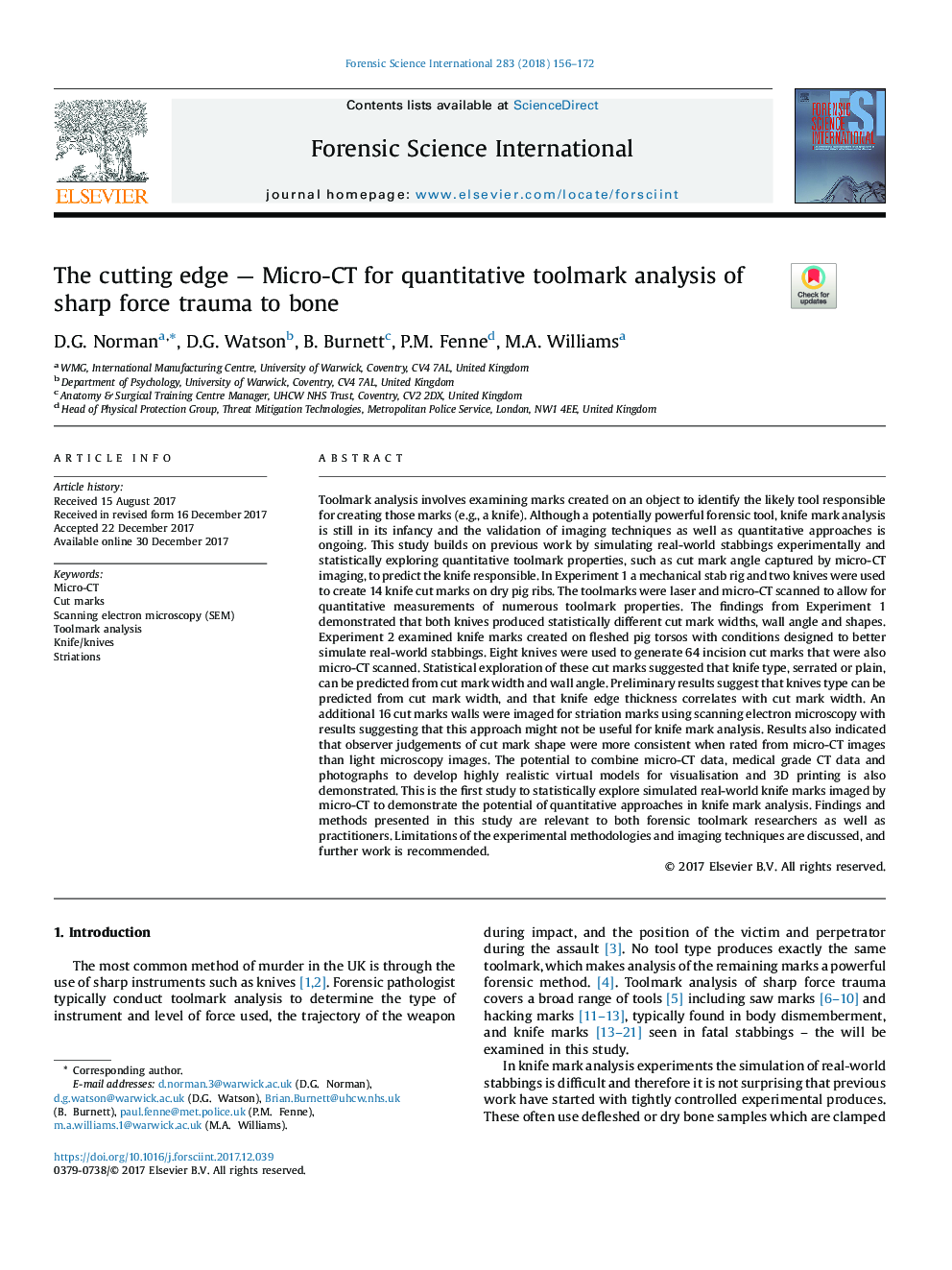| کد مقاله | کد نشریه | سال انتشار | مقاله انگلیسی | نسخه تمام متن |
|---|---|---|---|---|
| 6551316 | 1421967 | 2018 | 17 صفحه PDF | دانلود رایگان |
عنوان انگلیسی مقاله ISI
The cutting edge - Micro-CT for quantitative toolmark analysis of sharp force trauma to bone
دانلود مقاله + سفارش ترجمه
دانلود مقاله ISI انگلیسی
رایگان برای ایرانیان
کلمات کلیدی
موضوعات مرتبط
مهندسی و علوم پایه
شیمی
شیمی آنالیزی یا شیمی تجزیه
پیش نمایش صفحه اول مقاله

چکیده انگلیسی
Toolmark analysis involves examining marks created on an object to identify the likely tool responsible for creating those marks (e.g., a knife). Although a potentially powerful forensic tool, knife mark analysis is still in its infancy and the validation of imaging techniques as well as quantitative approaches is ongoing. This study builds on previous work by simulating real-world stabbings experimentally and statistically exploring quantitative toolmark properties, such as cut mark angle captured by micro-CT imaging, to predict the knife responsible. In Experiment 1 a mechanical stab rig and two knives were used to create 14 knife cut marks on dry pig ribs. The toolmarks were laser and micro-CT scanned to allow for quantitative measurements of numerous toolmark properties. The findings from Experiment 1 demonstrated that both knives produced statistically different cut mark widths, wall angle and shapes. Experiment 2 examined knife marks created on fleshed pig torsos with conditions designed to better simulate real-world stabbings. Eight knives were used to generate 64 incision cut marks that were also micro-CT scanned. Statistical exploration of these cut marks suggested that knife type, serrated or plain, can be predicted from cut mark width and wall angle. Preliminary results suggest that knives type can be predicted from cut mark width, and that knife edge thickness correlates with cut mark width. An additional 16 cut marks walls were imaged for striation marks using scanning electron microscopy with results suggesting that this approach might not be useful for knife mark analysis. Results also indicated that observer judgements of cut mark shape were more consistent when rated from micro-CT images than light microscopy images. The potential to combine micro-CT data, medical grade CT data and photographs to develop highly realistic virtual models for visualisation and 3D printing is also demonstrated. This is the first study to statistically explore simulated real-world knife marks imaged by micro-CT to demonstrate the potential of quantitative approaches in knife mark analysis. Findings and methods presented in this study are relevant to both forensic toolmark researchers as well as practitioners. Limitations of the experimental methodologies and imaging techniques are discussed, and further work is recommended.
ناشر
Database: Elsevier - ScienceDirect (ساینس دایرکت)
Journal: Forensic Science International - Volume 283, February 2018, Pages 156-172
Journal: Forensic Science International - Volume 283, February 2018, Pages 156-172
نویسندگان
D.G. Norman, D.G. Watson, B. Burnett, P.M. Fenne, M.A. Williams,